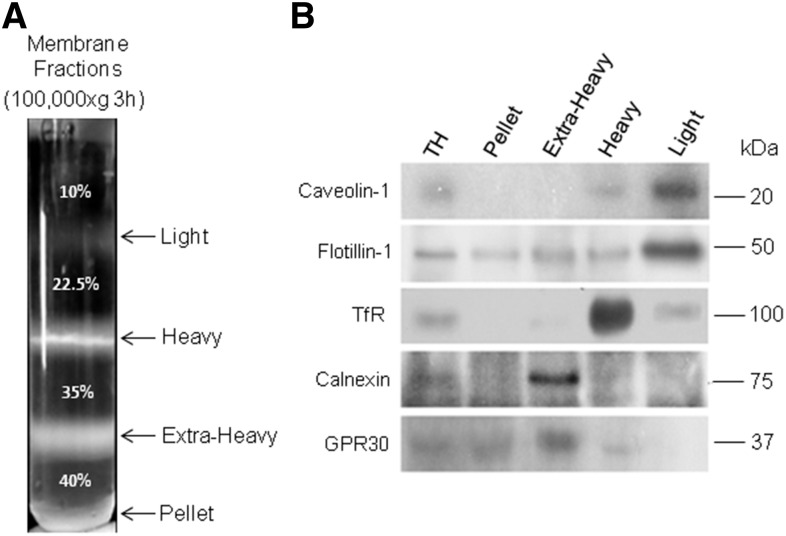Fig. 1.
Isolation and features of the membrane fractions obtained from adult rat spermatogenic cells by a detergent-free method. The same procedures illustrated here for the TCs were applied to the PtS, RS, and LS populations. Total homogenates (TH) were prepared in each case and subjected to ultracentrifugation using a discontinuous sucrose gradient to separate the membrane fractions. A: Membrane fractions isolated from the TH of TCs. The arrows point to the separation between the sucrose concentrations shown in the tube (35%, 22.5%, and 10%), the arrows indicating the interphases at which the light, heavy, and extra-heavy membrane fractions were collected (at the bottom of the tube, was an insoluble pellet). B: Representative immunoblots showing the distribution of the indicated proteins in the TH before fractionation and among membrane fractions separated as shown in (A). The amount of protein loaded in each lane was 25 μg. The proteins shown are two raft/caveolae markers (caveolin-1 and flotillin-1), a non-raft plasma membrane marker protein (TfR), and two endoplasmic reticulum markers (calnexin and GPR30 protein).

